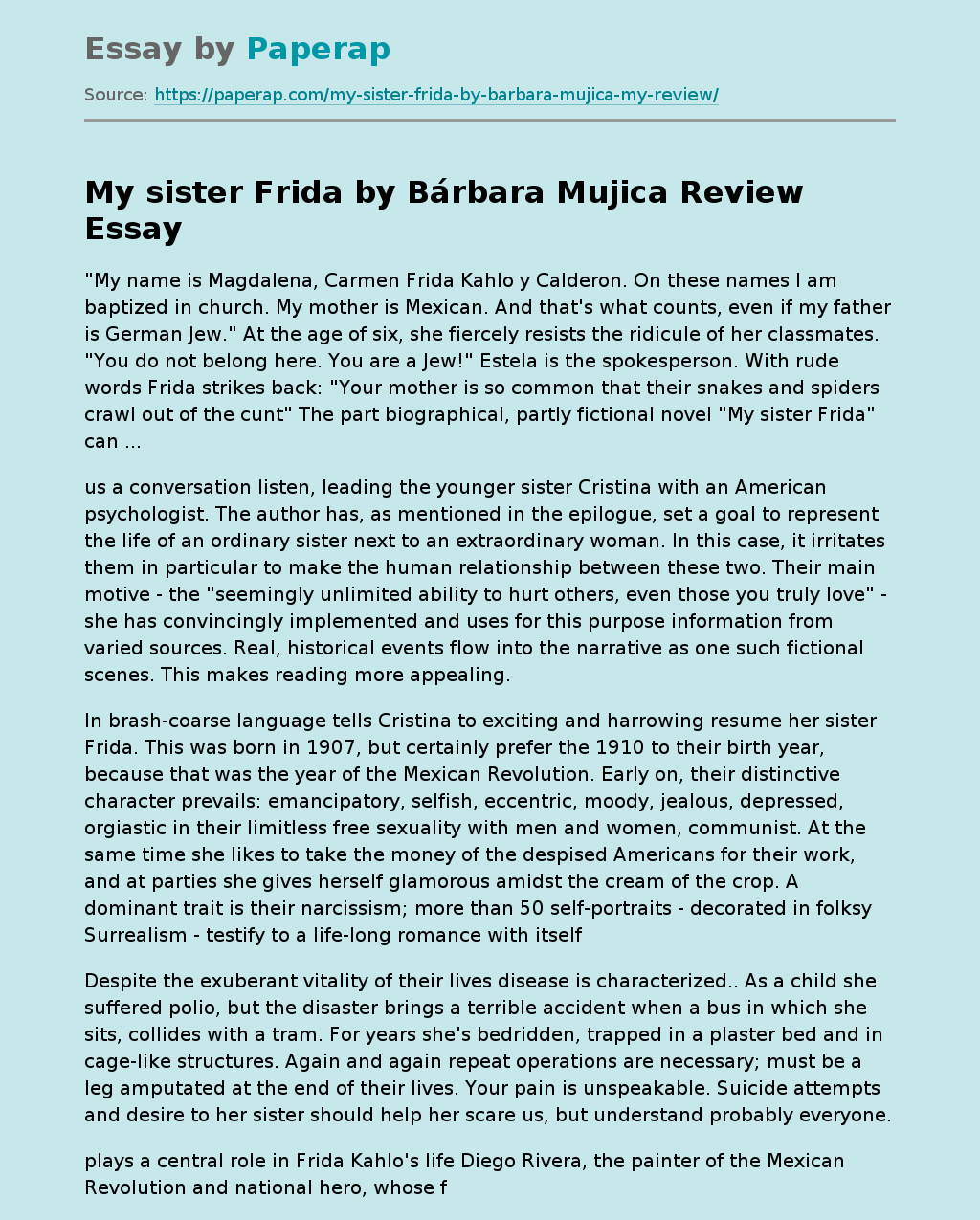My sister Frida by Bárbara Mujica Review
“My name is Magdalena, Carmen Frida Kahlo y Calderon. On these names I am baptized in church. My mother is Mexican. And that’s what counts, even if my father is German Jew.” At the age of six, she fiercely resists the ridicule of her classmates. “You do not belong here. You are a Jew!” Estela is the spokesperson. With rude words Frida strikes back: “Your mother is so common that their snakes and spiders crawl out of the cunt” The part biographical, partly fictional novel “My sister Frida” can …
us a conversation listen, leading the younger sister Cristina with an American psychologist.
The author has, as mentioned in the epilogue, set a goal to represent the life of an ordinary sister next to an extraordinary woman. In this case, it irritates them in particular to make the human relationship between these two. Their main motive – the “seemingly unlimited ability to hurt others, even those you truly love” – she has convincingly implemented and uses for this purpose information from varied sources.
Real, historical events flow into the narrative as one such fictional scenes. This makes reading more appealing.
In brash-coarse language tells Cristina to exciting and harrowing resume her sister Frida. This was born in 1907, but certainly prefer the 1910 to their birth year, because that was the year of the Mexican Revolution. Early on, their distinctive character prevails: emancipatory, selfish, eccentric, moody, jealous, depressed, orgiastic in their limitless free sexuality with men and women, communist. At the same time she likes to take the money of the despised Americans for their work, and at parties she gives herself glamorous amidst the cream of the crop.
A dominant trait is their narcissism; more than 50 self-portraits – decorated in folksy Surrealism – testify to a life-long romance with itself
Despite the exuberant vitality of their lives disease is characterized.. As a child she suffered polio, but the disaster brings a terrible accident when a bus in which she sits, collides with a tram. For years she’s bedridden, trapped in a plaster bed and in cage-like structures. Again and again repeat operations are necessary; must be a leg amputated at the end of their lives. Your pain is unspeakable. Suicide attempts and desire to her sister should help her scare us, but understand probably everyone.
plays a central role in Frida Kahlo’s life Diego Rivera, the painter of the Mexican Revolution and national hero, whose frescoes People’s and workers issues still adorn many public buildings. This ugly, thick, unkempt man – “he has short arms to the legs of a toad” – are the women’s feet, and he takes all that he can get. Frida learns to love him and hate, and they get married. But Sister Cristina becomes his Lieblingsaktmodell. In his painted allegories it represents wisdom and life. Of course they have an affair and appear in public. Humiliation, injury, revenge separation shape the relationship of the three persons among themselves.
The marriage between the uncontrolled egocentric Diego and Frida, who, despair, lust and desire for freedom is it closely kindred spirits in anger, is constantly under tension , Both live recklessly in their self-determination. They split up, remarry separate again … When Cristina for lover Diego, she will live for a time, but can never remove their guilt over Frida. This, in turn, disregarded, commanded, insulted and uses them on shabbiest. Cristina’s feelings remain ambivalent, cruel but understandable. Even as a child barely noticed, while Frida was preferred as a daddy’s girl, she wishes Frida might die.
Both women have strong characters. Frida rears up, forces himself with extreme effort of will and despite unbearable pain, to open their vernissage at the Alvarez Gallery of Contemporary Art in Mexico City. Cristina’s love eventually exceeds their hatred and gives her the strength to care for her sister until her death (1954). “An ordinary sister” and Cristina is not. This book is an ideal complement to the exhibition “Frida Kahlo” at the Martin-Gropius-Bau in Berlin (until 9 August 2010).
My sister Frida by Bárbara Mujica Review. (2019, Nov 18). Retrieved from https://paperap.com/my-sister-frida-by-barbara-mujica-my-review/

